Today's Tidbit... What Color Is Your Pair of Pants (and Jersey)?
Many of our visual images of 1920s football come from black-and-white photographs from college yearbooks, newspapers, and other periodicals. With many of those images, it is difficult to distinguish the two teams unless one has striped sleeves, socks, or they vary in the pattern of the friction strips on their jerseys.
However, people in the 1920s did not live in a black-and-white world or play football in one. They wore ribbons and waved pennants in school colors, while those on the field generally wore jerseys in their school colors.
Football pants started transitioning in the mid-1920s from being available solely in earth-tone colors to more vibrant colors. For example, the 1924 Goldsmith Football Equipment College Catalog included three samples of the fabrics used for the football pants. While all three are earth tones, the text indicates they are available in maroon, cardinal, light green, orange, royal blue, and dark green.
Jerseys had long been more colorful, presumably due to the different materials and the ability to knit stripes or other patterns into the jerseys. The same GoldSmith catalog included fabric samples showing the fifteen colors in which they sold jerseys and pants.
So, with that introduction, below is a c. 1900 jersey and a handful from the 1920s and 1930s that show the colors of old. (I found the images on Pinterest.)
Click Support Football Archaeology for options to support this site beyond a free subscription.


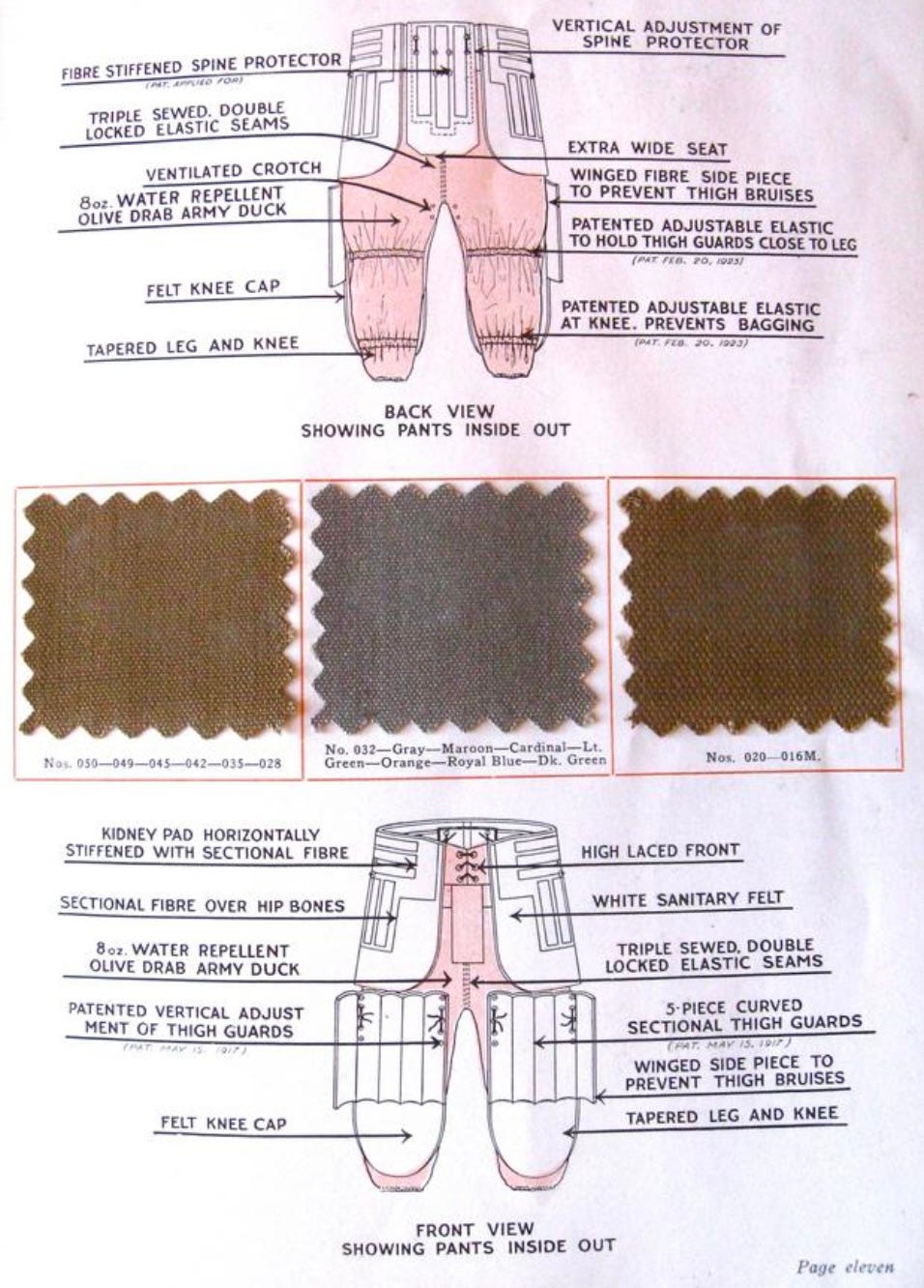
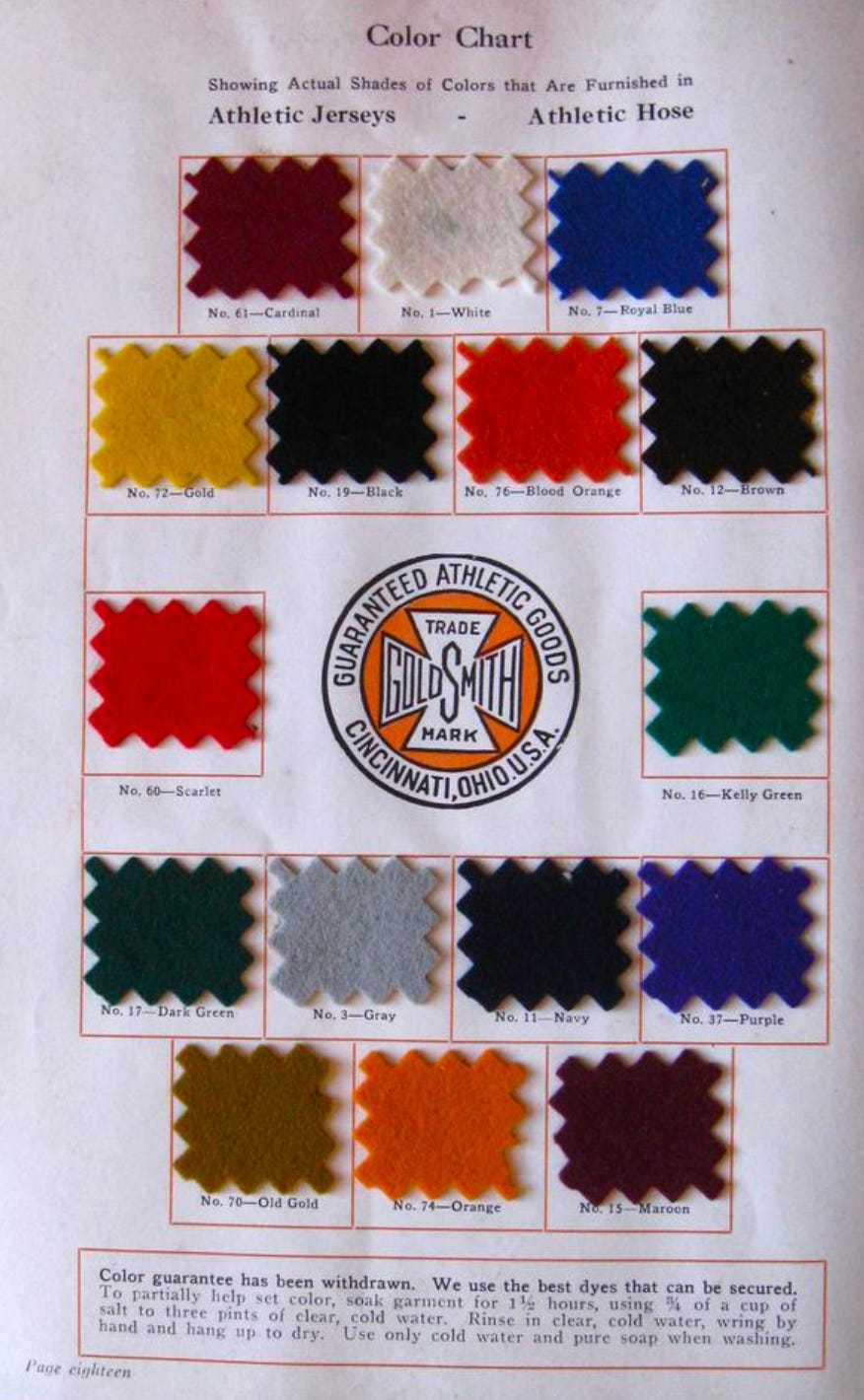
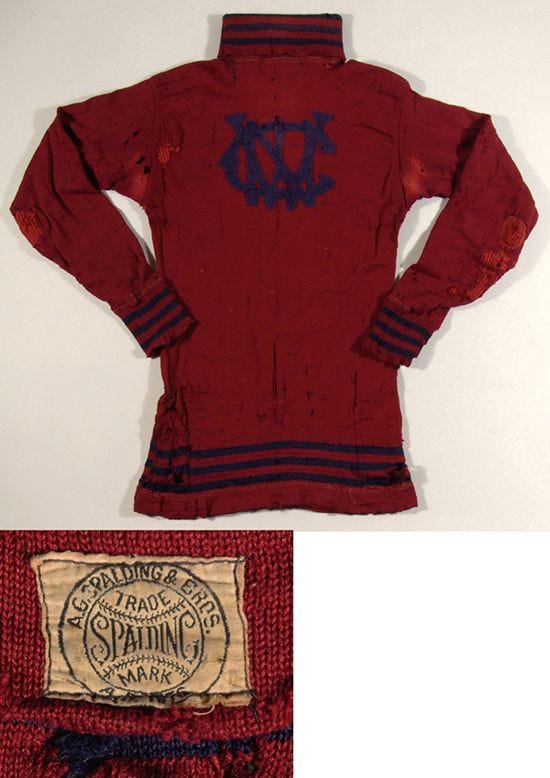
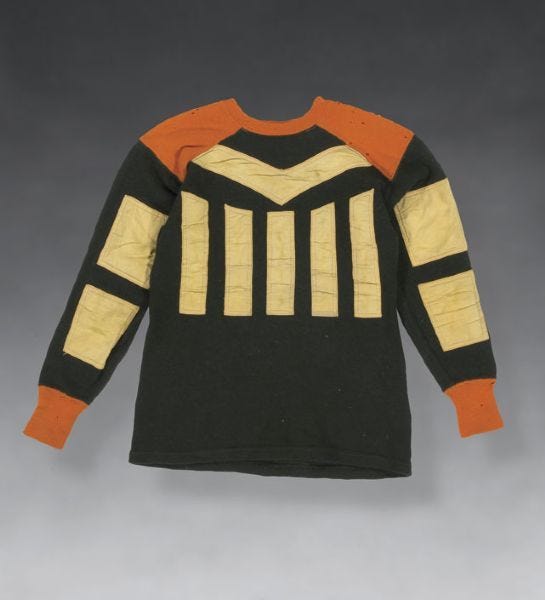

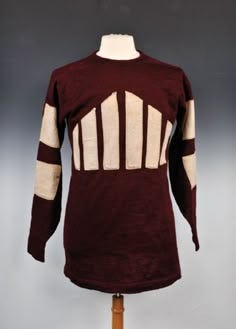
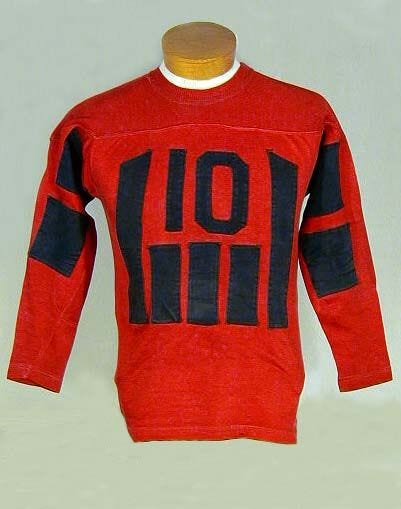

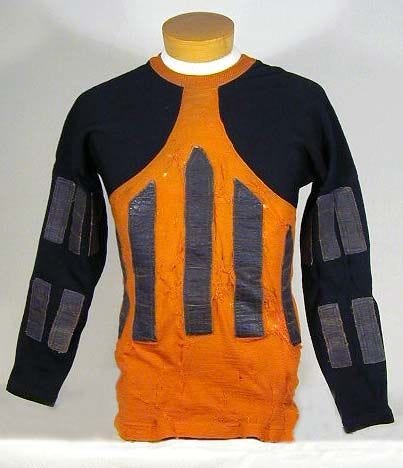
Wonder as to the oldest existing jersey (and from a pioneer power) ..
Is a legend available that correlates the jersey picture with a team?